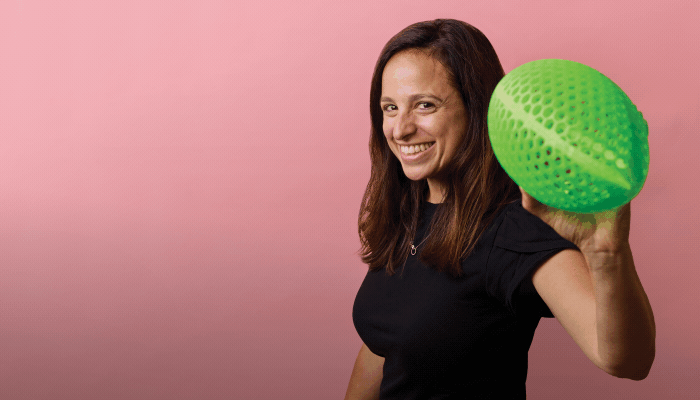Student use of artificial intelligence isn’t always welcomed with open arms. Sabba Quidwai, founder and CEO of educational consultancy Designing Schools, says some educators have told her that “kids are just not thinking anymore” because of it.
Similarly, a recent report from Microsoft found:
- More than 30% of K–12 educators are concerned about AI-related plagiarism and cheating
- More than 20% [S1] worry students could become overly dependent on the technology
When integrated intentionally, AI can strengthen — not take the place of — student creativity. New research from CDW reveals that among K–12 decision-makers, 68% identify accelerating innovation in teaching and learning as a top goal of AI adoption, while 52% cite concerns about governance or student data use.
LEARN MORE: How to optimize design and innovation in K–12 spaces.
Still, human qualities such as empathy are an essential component to the design, according to Quidwai. A recent EdTech: Focus on K–12 feature on hands-on innovation describes how school districts are using technology to design classrooms across the country that are just as considerate of empathy as they are experimentation. From building assistive devices to tackling community challenges, students are learning to treat AI as a true collaborator.
Quidwai suggests schools view AI as a resource to accelerate tech education efforts instead of as a challenge to overcome.
“When I had AI re-create a design thinking experience, I was truly blown away,” she says. “What typically takes people six months to do in a workshop series, AI did in 30 minutes.”
DISCOVER: How to modernize your K–12 learning environment.
As students become more familiar with the technology, their willingness to experiment and use AI to drive innovation in projects may also increase.
“If you believe, ‘I’m actually really good at this already,’ your confidence will skyrocket,” Quidwai says. “The connection between mindset and skills is very strong when you practice design thinking, because you need skills, but without a confident mindset, you’re frozen before you can even begin.”
In support of this creative design innovation, school districts are exploring education solutions for classroom modernization and digital workspace tools that empower both students and teachers.










